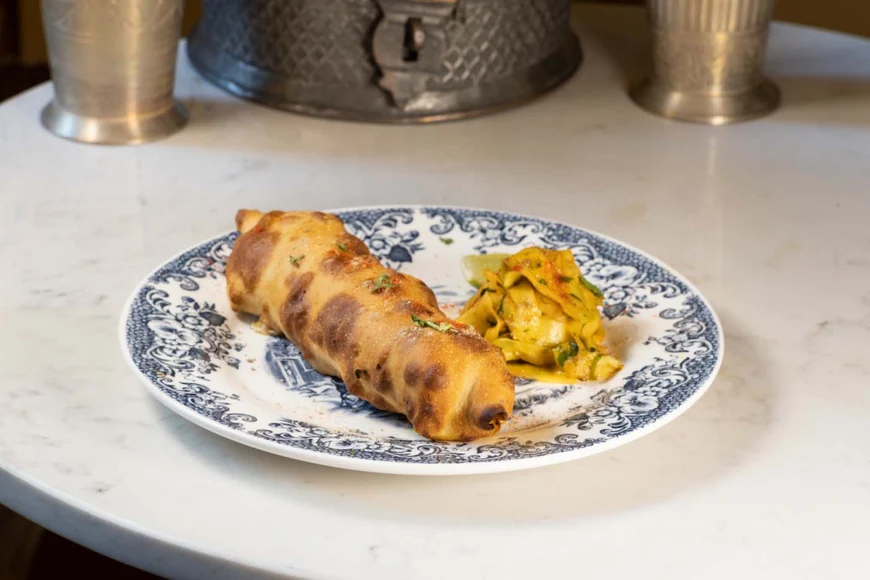
Kebab Festival Covent Garden
Kebab Festival at Colonel Saab Covent Garden
Get stuck in this summer for over a month of special delicacies, Colonel Saab will be showcasing an extraordinary menu of superior kebabs. We are rebranding the timeworn dish and bringing you what a true Indian kebab should be. Through this menu, Colonel Saab looks to present evolution, passion, history, and the resilient culture of Indian food.
India has been a force of culinary expertise with a true passion for cuisine for many centuries. Our chefs have focused attention on each and every detail. Paying homage to Indian custom - whilst also ensuring there is something for everyone - enabling each dish to tell a story of its heritage. This menu will be available from 20th June to 30th July 2022.
Restaurant Covent Garden Kebab Festival
TUNDAY KEBAB (LAMB)
Originally established in the bustling streets of Gol Darwaza in the
Chowk area of Lucknow in 1905, it was here that Haji – Murad Ali,
more fondly remembered as ‘Tunday Kababi’ sold his delicious kebabs
for more than a hundred years, and built a legacy to envy.
MUTTON SEEKH KEBAB (LAMB)
Seekh Kebab were originally known as Shish Kebab and was introduced
to India by the Turks (particularly Turkish traders). In Turkish,
the word shish actually means a "sword” or skewer and the word kebab
means "to roast”.
SHIKARI RAAN (GOAT MEAT)
Traditionally after hunting in ancient times, people used to
marinate the meat in forest herbs and cook the kebab on top of a hot
stone. Typically, in the past meat like rabbit, deer & chicken was
used.
VENISON SOOLA BOTI (VENISON)
This Soola recipe is from Rajasthan in Northern India. Chef Sohan
has been mastering it for years. An all-round paste is used to
flavour and marinate the meat, made from various ingredients such as
fish, shellfish, poultry, meat and even game.
MURGH RESHMI KEBAB
Reshmi Kebab is a famous chicken kebab commonly eaten in India and
Pakistan. It has Mughal influence which can be seen in the process
of cooking using cream and cashew nuts. Made with boneless chicken,
it is cooked by marinating chunks of meat in yogurt, cream, cashew
nut paste, spices and then grilled in a Tandoor. It has a crusty
upper layer and a soft inside.
TANDOORI ROASTED TANGRI
Indian cuisine involves grills and Tandoor cooking, especially for
kebabs, although kebabs are of Persian origin. Tangri Kebab is made
using chicken legs. Tangri (pronounced as Tangdi) simply means the
leg or drumstick.
MEEN POLLICHATHU
Kerala style or also known as Fish Pollichathu is a burst of
flavours of aromatic masalas. Our chefs pan fry this speciality
fish, wrap it in banana leaves with all the spices and then roast to
perfection.
JHEENGA DUM NISHA
Fresh tiger prawns simmered in saffron sauce flavoured with cinnamon
and cardamom. Dum pukht, which is a cooking technique associated
with the Northern Indian subcontinent. Meat and vegetables are
cooked over a low flame, in a dough sealed container with spices.
Traditions assign its origin in pre-partition India to the reign of
Nawab Asaf-ud-Daulah (1748–97). The technique is now commonly used
in other cuisines such as Pakistani and North Indian.
KANDHARI PANEER TIKKA
Pomegranate, the key ingredient in this dish, commonly known in
India as Anardana is used in a lot of North Indian cooking. From
curries, breads, raitas and tikkas the seeds are used fresh or
dehydrated. Dehydrated pomegranate seeds lend that required sweet &
sour flavour in curries or chutneys. It’s the perfect souring agent
lending that tangy slant to a dish from the Valley Of Uttrakhand.
ZIMIKAND KI SHAMI
Originating in the city of Lucknow, Uttar Pradesh once the heart of
the Mughal command in India. These tasty kebabs are said to have
been invented by a chef to a great Nawab (ruling nobleman). The
Nawab, having lost all of his teeth due to his general
overindulgence, but not wanting to miss out on his chef’s culinary
delights, challenged the chef to come up with a flavorsome dish that
could be eaten even by the toothless. And so, as legends tells us,
the Shami Kebab was born.
DAHI KE KEBAB
Dahi Ke Kebab is a Mughlai appetiser that is creamy on the inside,
crunchy on the outside and packed with saffron flavours. Served with
pickled onions and pudina chutney.
ALOO KI NAZAKAT
Whole peeled potato stuffed with fried skin of potato, some papad
and dry nuts. Cooked in a Tandoor for perfection.
FALAHARI CHAAT
India is known for its street foods, especially its various kinds of
chaats. Chaat menus change from region to region – i.e papdi chaat
in north India and dahi vada in southern India. However, there's a
kind of chaat which you can find in every region of the country -
from extreme south to extreme north; and that is fruit chaat. It is
basically a combination of various fruits mixed together with
spices. Fruit chaat can any day be considered as a healthier option
among all the street-foods available across the country, as fruits
are superfoods, which are considered to be potent sources of
essential nutrients.














